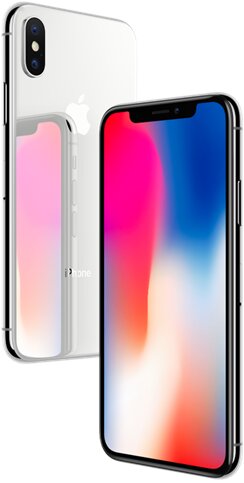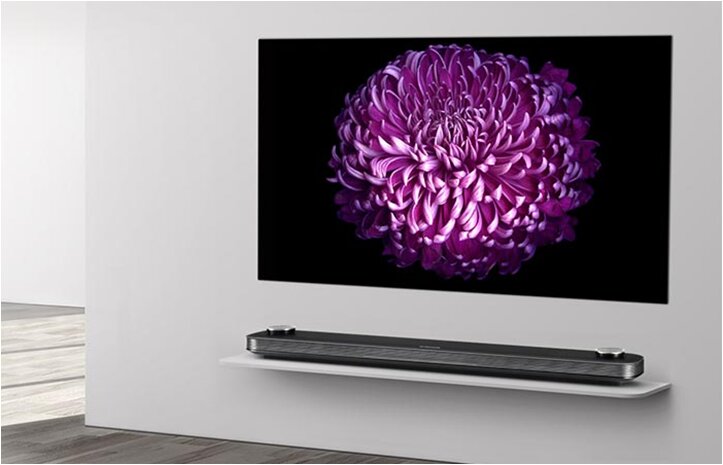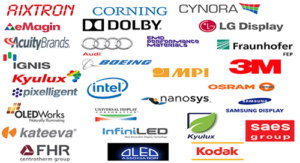There was a sense of exuberance at the OLED world Summit in San Francisco, which I attended last week. Suppliers of the OLED industry value-chain exhibited strong confidence about the future demand growth for OLED displays.

The industry’s concern at the event was mostly on the supply side. Will there be enough production to meet the demand in the near term?
The increased confidence was the direct result of the eagerly anticipated introduction of iPhone X by Apple, two weeks ago. Its use of an OLED display for the iPhone X gave a real sense to the industry that the “mobile OLED era” has finally arrived. Now that Apple has adopted OLED display for its smartphone, others will follow. The industry feels confident that OLED mobile display will grow, expand and dominate the smartphone market.
The Mobile OLED era is here
Samsung’s smartphone models with OLED display will lead the way for the era to come. The OLED panel in the Galaxy was supplied by its sister company, Samsung Display. Innovations on the display panel side have enabled innovative design in the smartphone devices. The real shift came in 2015 when flexible OLED displays enabled differentiated design in the Galaxy series, bringing higher demand. But Apple’s adoption of OLED display for iPhone X made it official for the industry that the “Mobile OLED era” is here to stay.

The other factor that contributed to this trend is the number of OLED panel suppliers entering the industry with high capital investments, especially from China. Samsung Display has been the leading supplier for OLED mobile panels. LG Display, the other leading OLED supplier, has focused more on TV than on the mobile market in the past. But, in recent years, several suppliers from China including BOE, Tianma, China Star, EDO, Visionox, Truly and others have entered the OLED industry with major capital investments.
In terms of production capacity, Chinese investment is very aggressive but supply will be significant only after 2019. Top China smartphone brands are already using OLED displays in their high-end models. Demand for OLED panels is increasing even more now, after Apple’s entrance. But Samsung Display is the only true volume supplier for smartphone OLED displays, especially for flexible panels in 2017. Thus supply is constrained for the non-Apple and Samsung brands.
Flexible display can truly deliver differentiated designs. But the flexible OLED display production process is very complex and the cost is high. Samsung and LG Display are increasing their flexible display capacity and new entrants are also investing aggressively. But considering the complexity of the production process, manufacturing and yield issues, supply can be a real challenge and costs can be high impacting demand growth rates in the near term.
Foldable is right around the corner
Smartphone suppliers are looking for design differentiation to give a boost to demand. OLED Panel suppliers are developing foldable display to enable design differentiation. There has been a lot of speculation about when the concept will come to the market. First generation products are passively flexible to support curved designs and that has helped Samsung to create the full “infinity display” design in its Galaxy products.
Foldable displays could enable dynamic flexible product which are considered to be the second generation of flexible display products. Making a foldable smartphone requires the replacement of glass by plastic films for both the substrate film and the cover window film. For the substrate, companies need thermally stable polyimide (PI) films for cover windows, strong plastic films and hard surface coating.
Foldable design brings many new challenges especially from the stress management prospective. Film stacks need to be engineered to reduce stress. The film has to withstand repeated mechanical movements. For the Thin Film Encapsulation (TFE) stack, this could mean new materials and thinner layers. The industry expects the first foldable smartphone in 2018, but only in limited quantities. More products are expected in 2019. Some experts feel that more time is needed for the technology to mature for mass production. Market adoption of foldable products before the full development of technology might create several issues leading to poor adoption rates by consumers.
OLED TV is ready to bring design differentiation
OLED TV, up to now, has had a small presence in terms of unit shipments in spite of great picture quality. This was due to the lower production volume and higher costs compared to LCD TV. LG Display is the sole supplier of OLED TV panels in 2017 but more suppliers especially from China are expected to join in future. LG’s own estimation of production was 0.9 million units OLED TV in 2016 and 1.7 million in 2017. LG’s production plan for 2020 is only for 6 million units.
Still, LG expects OLED to be the future of TV, because of picture quality and design differentiation. The self-emissive pixel dimming of OLED enables perfect black and infinite contrast ratio providing great picture quality. While mobile OLED is based on RGB OLED on polysilicon substrates, LG’s OLED TV panel is based on white OLED on an Oxide TFT substrate. LG feels this is the best solution for large OLED displays even for free form displays, considering the oxide TFT uniformity and process temperature on a plastic substrate.

LG introduced its Wallpaper TV concept in 2017. The crystal sound OLED which was also introduced in 2017, is said to provide an immersive experience by combining the video and sound on the screen. Instead of using a separate, speaker one gets direct sound from the screen.
LG has shown 77-inch transparent rollable/flexible displays for applications such as signage. OLED TV is also ready to bring design differentiation for better adoption rates. But low production volumes, manufacturing challenges and higher costs will keep adoption rates at a limited level.
Preparation for Printing OLED is continuing
The OLED industry is still searching for higher efficiency and longer lifetime materials. The big challenges in bringing a new generation of OLED products are performance, time to market, production quality and costs. R and D in OLED materials and equipment is continuing. Many companies are using simulation-assisted development to reduce experimental trial and error costs and accelerating research and development in materials and device structures.
The industry is still looking for better blue materials and longer life times. While the industry is working on better blue phosphorescence, Kyulux is working on its Hyperfluorescence solution while Cynora is working on TADF for emitter technology. Merck is working on a systematic full stack approach to OLED material development and focusing on ink development for printing and state of the art material development for vaporization.
The OLED industry is working towards using inkjet equipment and processes with better soluble materials. Challenges for using the OLED ink jet printing method have sometimes impacted device performance; issues such as poor yield rates, low productivity, and slow production schedules result in higher costs.
Kateeva, which makes inkjet printers, is focusing on its YieldJet platform for resolving OLED mass production issues. Kateeva’s thin film encapsulation equipment for mobile OLED is already in mass production, delivering millions of flexible OLED products. The company expects RGB pixel printing for TV and mid-size OLEDs to be in mass production in the future.
Dr. Mike Hack , VP from Universal Display, presented the concept of Organic Vapor Jet printing, a solvent-less, mask-less patterning technology for OLED display. The OLED materials are the same as in standard vacuum thermal evaporation systems. It is scalable to Gen 8 plus fabs, Hack said.
Prospects are Bright
The OLED industry is feeling exuberant as it readies for next generation display applications with continuous development of materials, processes and products to provide flexible, foldable and rollable next generation products that can provide design differentiation. But, for higher consumer acceptance rates and higher growth in demand, technology innovation has to be combined with lower cost. – Sweta Dash
Sweta Dash is the founding president of Dash-Insights, a market research and consulting company specializing in the display industry. For more information, contact [email protected] or visit www.dash-insight.com

